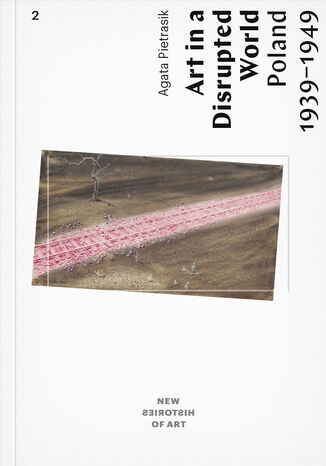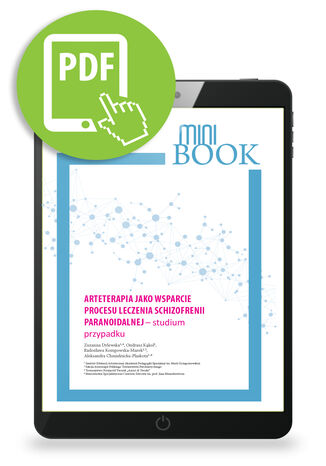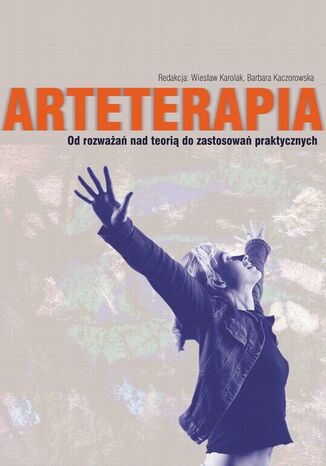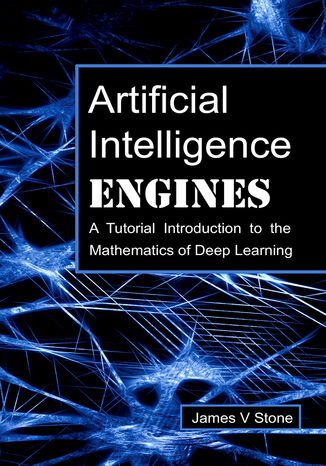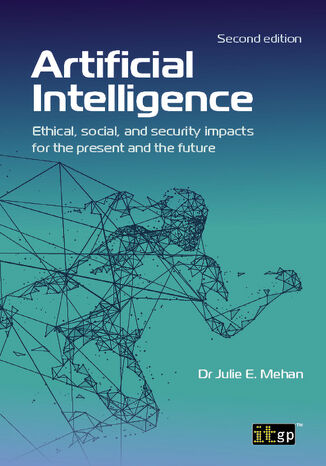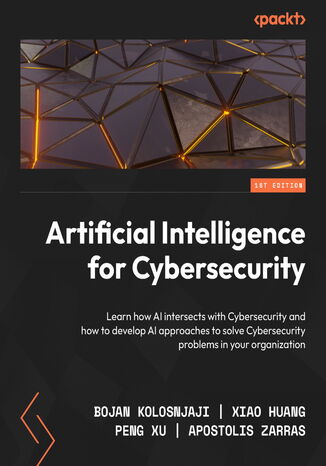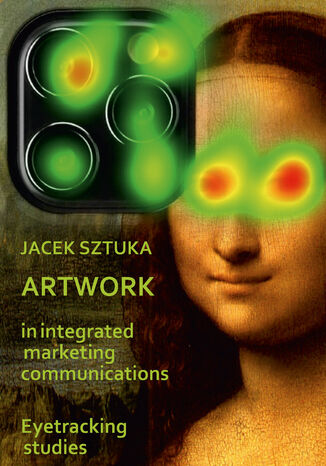Kategorien
E-Books
-
Wirtschaft
- Bitcoin
- Geschäftsfrau
- Coaching
- Controlling
- E-Business
- Ökonomie
- Finanzen
- Börse und Investitionen
- Persönliche Kompetenzen
- Computer im Büro
- Kommunikation und Verhandlungen
- Kleines Unternehmen
- Marketing
- Motivation
- Multimedia-Training
- Immobilien
- Überzeugung und NLP
- Steuern
- Sozialpolitik
- Handbȕcher
- Präsentationen
- Führung
- Public Relation
- Berichte, Analysen
- Geheimnis
- Social Media
- Verkauf
- Start-up
- Ihre Karriere
- Management
- Projektmanagement
- Personal (HR)
-
Für Kinder
-
Für Jugendliche
-
Bildung
-
Enzyklopädien, Wörterbücher
-
E-Presse
- Architektura i wnętrza
- Sicherheit und Gesundheit am Arbeitsplatz
- Biznes i Ekonomia
- Haus und Garten
- E-Business
- Ekonomia i finanse
- Esoterik
- Finanzen
- Persönliche Finanzen
- Unternehmen
- Fotografie
- Informatik
- HR und Gehaltsabrechnung
- Frauen
- Computer, Excel
- Buchhaltung
- Kultur und Literatur
- Wissenschaftlich und akademisch
- Umweltschutz
- meinungsbildend
- Bildung
- Steuern
- Reisen
- Psychologie
- Religion
- Landwirtschaft
- Buch- und Pressemarkt
- Transport und Spedition
- Gesundheit und Schönheit
-
Geschichte
-
Informatik
- Office-Programme
- Datenbank
- Bioinformatik
- IT Branche
- CAD/CAM
- Digital Lifestyle
- DTP
- Elektronik
- Digitale Fotografie
- Computergrafik
- Spiele
- Hacking
- Hardware
- IT w ekonomii
- Wissenschaftliche Pakete
- Schulbücher
- Computergrundlagen
- Programmierung
- Mobile-Programmierung
- Internet-Server
- Computernetzwerke
- Start-up
- Betriebssysteme
- Künstliche Inteligenz
- Technik für Kinder
- Webmaster
-
Andere
-
Fremdsprachen lernen
-
Kultur und Kunst
-
Lektüre
-
Literatur
- Anthologien
- Ballade
- Biografien und Autobiografien
- Für Erwachsene
- Drama
- Tagebücher, Memoiren, Briefe
- Epos
- Essay
- Science Fiction
- Felietonys
- Fiktion
- Humor, Satire
- Andere
- Klassisch
- Krimi
- Sachbücher
- Belletristik
- Mity i legendy
- Nobelpreisträger
- Kurzgeschichten
- Gesellschaftlich
- Okultyzm i magia
- Erzählung
- Erinnerungen
- Reisen
- Gedicht
- Poesie
- Politik
- Populärwissenschaftlich
- Roman
- Historischer Roman
- Prosa
- Abenteuer
- Journalismus
- Reportage
- Romans i literatura obyczajowa
- Sensation
- Thriller, Horror
- Interviews und Erinnerungen
-
Naturwissenschaften
-
Sozialwissenschaften
-
Schulbücher
-
Populärwissenschaft und akademisch
- Archäologie
- Bibliotekoznawstwo
- Filmwissenschaft
- Philologie
- Polnische Philologie
- Philosophie
- Finanse i bankowość
- Erdkunde
- Wirtschaft
- Handel. Weltwirtschaft
- Geschichte und Archäologie
- Kunst- und Architekturgeschichte
- Kulturwissenschaft
- Linguistik
- Literaturwissenschaft
- Logistik
- Mathematik
- Medizin
- Geisteswissenschaften
- Pädagogik
- Lehrmittel
- Populärwissenschaftlich
- Andere
- Psychologie
- Soziologie
- Theatrologie
- Teologie
- Theorien und Wirtschaftswissenschaften
- Transport i spedycja
- Sportunterricht
- Zarządzanie i marketing
-
Handbȕcher
-
Spielanleitungen
-
Professioneller und fachkundige Leitfaden
-
Jura
- Sicherheit und Gesundheit am Arbeitsplatz
- Geschichte
- Verkehrsregeln. Führerschein
- Rechtswissenschaften
- Gesundheitswesen
- Allgemeines. Wissenskompendium
- akademische Bücher
- Andere
- Bau- und Wohnungsrecht
- Zivilrecht
- Finanzrecht
- Wirtschaftsrecht
- Wirtschafts- und Handelsrecht
- Strafrecht
- Strafrecht. Kriminelle Taten. Kriminologie
- Internationales Recht
- Internationales und ausländisches Recht
- Gesundheitsschutzgesetz
- Bildungsrecht
- Steuerrecht
- Arbeits- und Sozialversicherungsrecht
- Öffentliches, Verfassungs- und Verwaltungsrecht
- Familien- und Vormundschaftsrecht
- Agrarrecht
- Sozialrecht, Arbeitsrecht
- EU-Recht
- Industrie
- Agrar- und Umweltschutz
- Wörterbücher und Enzyklopädien
- Öffentliche Auftragsvergabe
- Management
-
Führer und Reisen
- Afrika
- Alben
- Südamerika
- Mittel- und Nordamerika
- Australien, Neuseeland, Ozeanien
- Österreich
- Asien
- Balkan
- Naher Osten
- Bulgarien
- China
- Kroatien
- Tschechische Republik
- Dänemark
- Ägypten
- Estland
- Europa
- Frankreich
- Berge
- Griechenland
- Spanien
- Niederlande
- Island
- Litauen
- Lettland
- Mapy, Plany miast, Atlasy
- Miniführer
- Deutschland
- Norwegen
- Aktive Reisen
- Polen
- Portugal
- Andere
- Przewodniki po hotelach i restauracjach
- Russland
- Rumänien
- Slowakei
- Slowenien
- Schweiz
- Schweden
- Welt
- Türkei
- Ukraine
- Ungarn
- Großbritannien
- Italien
-
Psychologie
- Lebensphilosophien
- Kompetencje psychospołeczne
- zwischenmenschliche Kommunikation
- Mindfulness
- Allgemeines
- Überzeugung und NLP
- Akademische Psychologie
- Psychologie von Seele und Geist
- Arbeitspsychologie
- Relacje i związki
- Elternschafts- und Kinderpsychologie
- Problemlösung
- Intellektuelle Entwicklung
- Geheimnis
- Sexualität
- Verführung
- Aussehen ind Image
- Lebensphilosophien
-
Religion
-
Sport, Fitness, Diäten
-
Technik und Mechanik
Hörbücher
-
Wirtschaft
- Bitcoin
- Geschäftsfrau
- Coaching
- Controlling
- E-Business
- Ökonomie
- Finanzen
- Börse und Investitionen
- Persönliche Kompetenzen
- Kommunikation und Verhandlungen
- Kleines Unternehmen
- Marketing
- Motivation
- Immobilien
- Überzeugung und NLP
- Steuern
- Sozialpolitik
- Handbȕcher
- Präsentationen
- Führung
- Public Relation
- Geheimnis
- Social Media
- Verkauf
- Start-up
- Ihre Karriere
- Management
- Projektmanagement
- Personal (HR)
-
Für Kinder
-
Für Jugendliche
-
Bildung
-
Enzyklopädien, Wörterbücher
-
E-Presse
-
Geschichte
-
Informatik
-
Andere
-
Fremdsprachen lernen
-
Kultur und Kunst
-
Lektüre
-
Literatur
- Anthologien
- Ballade
- Biografien und Autobiografien
- Für Erwachsene
- Drama
- Tagebücher, Memoiren, Briefe
- Epos
- Essay
- Science Fiction
- Felietonys
- Fiktion
- Humor, Satire
- Andere
- Klassisch
- Krimi
- Sachbücher
- Belletristik
- Mity i legendy
- Nobelpreisträger
- Kurzgeschichten
- Gesellschaftlich
- Okultyzm i magia
- Erzählung
- Erinnerungen
- Reisen
- Poesie
- Politik
- Populärwissenschaftlich
- Roman
- Historischer Roman
- Prosa
- Abenteuer
- Journalismus
- Reportage
- Romans i literatura obyczajowa
- Sensation
- Thriller, Horror
- Interviews und Erinnerungen
-
Naturwissenschaften
-
Sozialwissenschaften
-
Populärwissenschaft und akademisch
- Archäologie
- Philosophie
- Wirtschaft
- Handel. Weltwirtschaft
- Geschichte und Archäologie
- Kunst- und Architekturgeschichte
- Kulturwissenschaft
- Literaturwissenschaft
- Mathematik
- Medizin
- Geisteswissenschaften
- Pädagogik
- Lehrmittel
- Populärwissenschaftlich
- Andere
- Psychologie
- Soziologie
- Teologie
- Zarządzanie i marketing
-
Handbȕcher
-
Professioneller und fachkundige Leitfaden
-
Jura
-
Führer und Reisen
-
Psychologie
- Lebensphilosophien
- zwischenmenschliche Kommunikation
- Mindfulness
- Allgemeines
- Überzeugung und NLP
- Akademische Psychologie
- Psychologie von Seele und Geist
- Arbeitspsychologie
- Relacje i związki
- Elternschafts- und Kinderpsychologie
- Problemlösung
- Intellektuelle Entwicklung
- Geheimnis
- Sexualität
- Verführung
- Aussehen ind Image
- Lebensphilosophien
-
Religion
-
Sport, Fitness, Diäten
-
Technik und Mechanik
Videokurse
-
Datenbank
-
Big Data
-
Biznes, ekonomia i marketing
-
Cybersicherheit
-
Data Science
-
DevOps
-
Für Kinder
-
Elektronik
-
Grafik / Video / CAX
-
Spiele
-
Microsoft Office
-
Entwicklungstools
-
Programmierung
-
Persönliche Entwicklung
-
Computernetzwerke
-
Betriebssysteme
-
Softwaretest
-
Mobile Geräte
-
UX/UI
-
Web development
-
Management
Podcasts
- E-Books
- Populärwissenschaft und akademisch
Populärwissenschaft und akademisch
Kiedy zapytasz naukowców, jakie owoce są najzdrowsze na świecie, bez wahania wskażą nie egzotyczne jagody z Ameryki Południowej, tylko właśnie aronię. Te niepozorne i nadal niedoceniane owoce są źródłem ogromnych ilości składników prozdrowotnych, między innymi polifenoli. W jednym z badań wykazano, że w aronii znajduje się około dziesięciu razy więcej polifenoli niż w pozostałych badanych owocach jagodowych. To dzięki nim aronia ma wiele pozytywnych właściwości dla zdrowia człowieka. Ochrona serca i układu krążenia, zapobieganie nowotworom, wspomaganie odporności i utrzymanie prawidłowej masy ciała to jedne z wielu supermocy tego wspaniałego owocu. Z książki dowiesz się, jakie właściwości prozdrowotne ma aronia, kiedy warto ją stosować, czy są przeciwwskazania do jej spożywania i jak wykorzystać potencjał leczniczy i kulinarny tych owoców. Agata Lewandowska - dietetyczka z kilkunastoletnim doświadczeniem, autorka ponad 20 poradników dietetycznych. Absolwentka Warszawskiego Uniwersytetu Medycznego, SGGW oraz podyplomowych studiów z psychodietetyki na SWPS, ukończyła też liczne kursy i szkolenia. Pisze artykuły, prowadzi warsztaty, wykłady i webinary. Patronat medialny: www.poradnikzdrowie.pl www.dietetycy.org.pl www.hellozdrowie.pl www.beszamel.pl
Art in a Disrupted World: Poland, 1939-1949
W książce Art in a Disrupted World historyczka sztuki Agata Pietrasik przedstawia studium praktyk artystycznych z czasu drugiej wojny światowej. Omawia dzieła urodzonych w Polsce artystów, które powstały w obozach koncentracyjnych, gettach, na uchodźstwie oraz w latach tużpowojennych. Zwraca uwagę na etyczną stronę praktyki artystycznej jako metody walki o zachowanie człowieczeństwa w najbardziej nieludzkich warunkach. Autorka przekracza utrwalone ramy historyczne oraz tradycyjne formy narracji. W trzech przystępnych esejach zestawia rysunki, obrazy, projekty architektoniczne i wystawiennicze, a także prace literackie i teatralne, by na nowo opowiedzieć o życiu w Polsce w czasie okupacji. Pietrasik proponuje nowe spojrzenie na sztukę w dekadzie następującej po wybuchu drugiej wojny światowej. Omawia mniej znane projekty uznanych twórców, takich jak Marian Bogusz czy Józef Szajna, i przybliża działalność tych, którzy jak Jadwiga Simon-Pietkiewicz nie zyskali jeszcze należnego im miejsca w historii sztuki. Przyglądając się sztuce i artystom tego okresu dąży do uchwycenia ich autonomicznych języków artystycznych. Pyta o zdolność historii sztuki do pomieszczenia w jej dyskursie dzieł powstałych w odpowiedzi na traumatyczne doświadczenia. Publikacja w języku angielskim.
Arteterapia jako wsparcie procesu leczenia schizofrenii paranoidalnej - studium przypadku
Zuzanna Dylewska, Ondrasz Kąkol, Radosława Kompowska-Marek, Aleksandra Chmielnicka-Plasota
Szacuje się, że na schizofrenię zapada 0,55–1,6% populacji ogólnej w społeczeństwach cywilizowanych [1]. Rozpoznanie schizofrenii niesie ze sobą konsekwencje personalne, medyczne, prawne i społeczne, a sama choroba jest postrzegana jako poważna, przewlekła i trudna do leczenia. Emocje i uczucia chorego stają się mgliste lub mniej jasne i mogą być opisywane jako „spłycone”. Może też wystąpić spadek inicjatywy czy energii. Schizofrenia od dawna opisywana jest jako choroba niejednorodna, o zmiennym obrazie klinicznym, zróżnicowanym przebiegu, stosunkowo często wymykająca się jednoznacznej ocenie [5]. Wciąż poszukuje się dodatkowych, pozafarmakologicznych metod wsparcia i aktywizacji chorych na schizofrenię. Jedną z nich jest arteterapia, czyli sposób oddziaływania terapeutycznego za pomocą kreacji artystycznej.
Arteterapia. Od rozważań nad teorią do zastosowań praktycznych
Barbara Kaczorowska, Wiesław Karolak
Prace i dorobek zespołu współpracującego z prof. Karolakiem są dobrze znane w Polsce i poza granicami kraju. Kolejne konferencje i spotkania oraz inicjatywy wspierające ruch związany z arteterapią pozwalają mieć nadzieję, że uzyskiwać ona będzie coraz większe znaczenie w Polsce. Świadczy o tym oryginalność formułowanych projektów badawczych oraz intensywność i zaangażowanie, z jaką są one realizowane. (z recenzji prof. W. Limont)
Artificial Intelligence Engines. A Tutorial Introduction to the Mathematics of Deep Learning
This book is a comprehensive guide to the mathematics behind artificial intelligence engines, taking readers from foundational concepts to advanced applications. It begins with an introduction to artificial neural networks, exploring topics like perceptrons, linear associative networks, and gradient descent. Practical examples accompany each chapter, making complex mathematical principles accessible, even for those with limited prior knowledge.The book's detailed structure covers key algorithms like backpropagation, Hopfield networks, and Boltzmann machines, advancing to deep restricted Boltzmann machines, variational autoencoders, and convolutional neural networks. Modern topics such as generative adversarial networks, reinforcement learning, and capsule networks are explored in depth. Each section connects theory to real-world AI applications, helping readers understand how these techniques are used in practice.Ideal for students, researchers, and AI enthusiasts, the book balances theoretical depth with practical insights. Basic mathematical knowledge or foundation is recommended, allowing readers to fully engage with the content. This book serves as an accessible yet thorough resource for anyone eager to dive deeper into artificial intelligence and machine learning.
Artificial Intelligence. Ethical, social, and security impacts for the present and the future
IT Governance Publishing, Dr. Julie E. Mehan
This book offers an in-depth exploration of Artificial Intelligence (AI), from its origins to the ethical and societal challenges it presents today. It provides a comprehensive understanding of AI’s impact on human interaction, collaboration, privacy, and security. Through analyzing both opportunities and risks, the book emphasizes the ethical concerns surrounding AI, such as bias, privacy violations, and security threats.Chapters explore AI’s transformative role in cybersecurity, misinformation, and human-machine collaboration, highlighting its implications for job markets and human relationships. Real-world examples illustrate how AI can drive progress or cause harm. The ethical dilemmas around AI, including its use in surveillance and decision-making, are thoroughly examined, presenting challenges central to modern technology.Looking ahead, the book offers a forward-thinking perspective on AI’s future, discussing emerging trends and the need for responsible policy-making. It concludes by addressing how society can prepare for AI’s continued growth, offering strategies for navigating the evolving landscape. With practical insights and deep analysis, this book helps readers grasp AI’s profound implications for our future.
Bojan Kolosnjaji, Huang Xiao, Peng Xu, Apostolis Zarras
Artificial intelligence offers data analytics methods that enable us to efficiently recognize patterns in large-scale data. These methods can be applied to various cybersecurity problems, from authentication and the detection of various types of cyberattacks in computer networks to the analysis of malicious executables.Written by a machine learning expert, this book introduces you to the data analytics environment in cybersecurity and shows you where AI methods will fit in your cybersecurity projects. The chapters share an in-depth explanation of the AI methods along with tools that can be used to apply these methods, as well as design and implement AI solutions. You’ll also examine various cybersecurity scenarios where AI methods are applicable, including exercises and code examples that’ll help you effectively apply AI to work on cybersecurity challenges. The book also discusses common pitfalls from real-world applications of AI in cybersecurity issues and teaches you how to tackle them.By the end of this book, you’ll be able to not only recognize where AI methods can be applied, but also design and execute efficient solutions using AI methods.
Artwork in Integrated Marketing Communications. Eyetracking Studies
In considering the relationship of the artwork to integrated marketing communications, it is worth addressing the hard-to-grasp concept of art itself and the work of art associated with it. Seeking answers to the fundamental question of the role of art and its creations in visual marketing communications, we must be aware of what an artwork is and how to distinguish it from other visual communications used in today's advertising and marketing. The fundamental problem of the research was to compare the ways of looking at authentic works of art as seen in the marketing space. Several works of artists, such as Leonardo da Vinci, Piet Mondrian, Rafael Santi, Vincent van Gogh and Salvador Dali that have been recognized over the centuries as unquestionably outstanding, impressive in both craftsmanship and depth of artistic expression, have been selected for the analysis. First two chapters of the work are an attempt to grasp the concept of an artwork and its meaning for the artist and the recipients, and at the same time - we are exposed to the difficulty of formulating a proper definition of an artwork. Then, in chapter three, a brief history of some of the greatest works of previously mentioned artists is presented. The following chapters are a considerations weather an artist's work, born of their "creative love", could be exhibited as a "product for sale", and if not too often great artifacts were able to become an object of trade only after the death of their authors. Chapter six exposes the ethical dilemmas regarding putting the images of the greatest masterpieces on promotional tools, a phenomenon which occurs also in the most famous museums in the world. The discussed integrated marketing communications in chapter seven make an introduction for consideration of the benefits of reproducing famous artworks onto advertising gadgets in chapter eight. Chapter nine is an in-depth analysis of the results of the eyetracking study conducted, and consists pictures of original artworks, as well as their reproductions on various items, and the way they were perceived by the eyetracking study respondents. The purpose of the study was to test the following theses: Does the power of an artwork viewed on a museum wall continue in its reproductions on promotional items, i.e. for example, on so-called advertising gadgets? Does the emotional impact of the image presented on the promotional materials still persist causing attention to be focused, or does audience's attention dissipate? If so, to what extent does it dissipate and what determines it?


